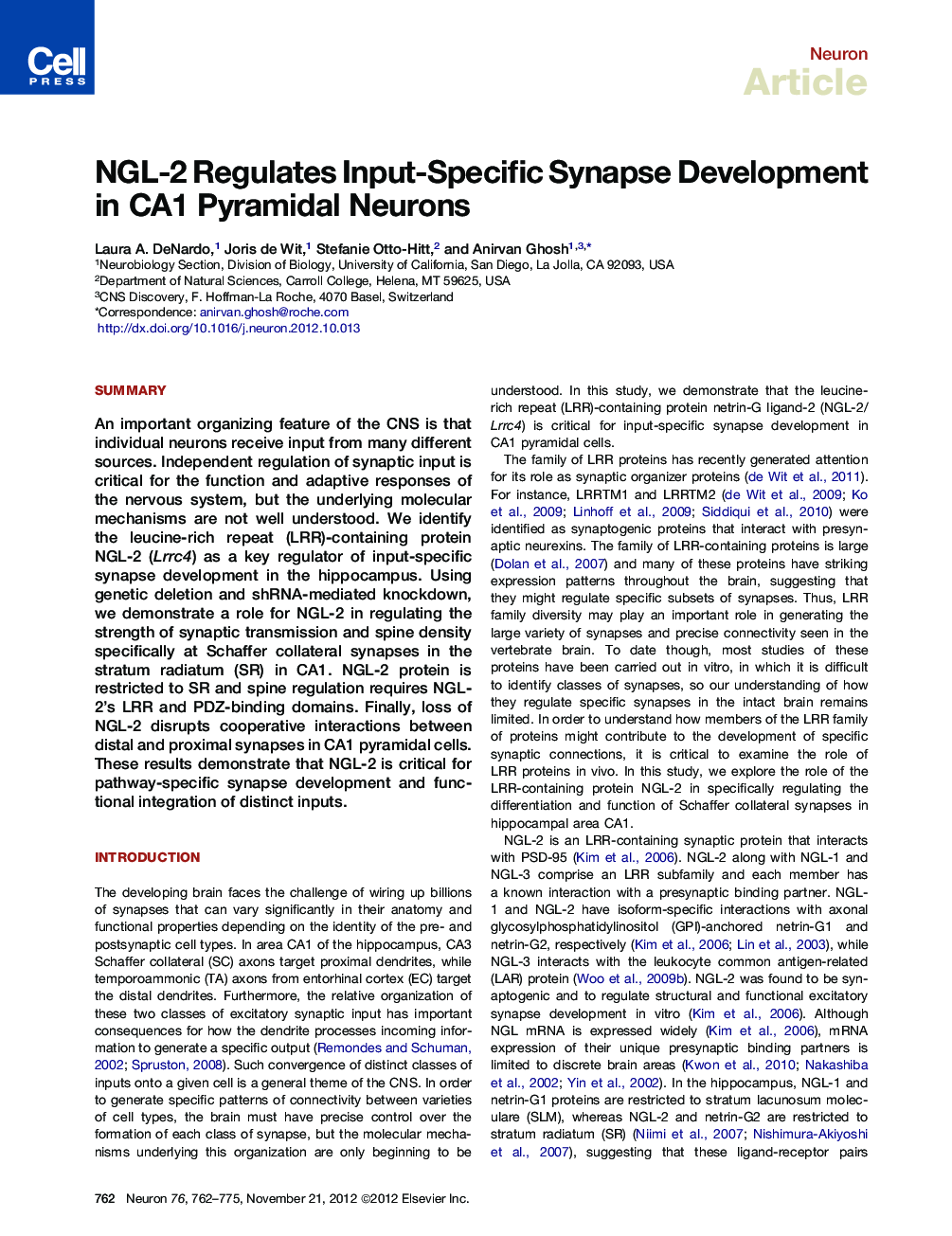| Article ID | Journal | Published Year | Pages | File Type |
|---|---|---|---|---|
| 4321260 | Neuron | 2012 | 14 Pages |
SummaryAn important organizing feature of the CNS is that individual neurons receive input from many different sources. Independent regulation of synaptic input is critical for the function and adaptive responses of the nervous system, but the underlying molecular mechanisms are not well understood. We identify the leucine-rich repeat (LRR)-containing protein NGL-2 (Lrrc4) as a key regulator of input-specific synapse development in the hippocampus. Using genetic deletion and shRNA-mediated knockdown, we demonstrate a role for NGL-2 in regulating the strength of synaptic transmission and spine density specifically at Schaffer collateral synapses in the stratum radiatum (SR) in CA1. NGL-2 protein is restricted to SR and spine regulation requires NGL-2's LRR and PDZ-binding domains. Finally, loss of NGL-2 disrupts cooperative interactions between distal and proximal synapses in CA1 pyramidal cells. These results demonstrate that NGL-2 is critical for pathway-specific synapse development and functional integration of distinct inputs.
► NGL-2 specifically regulates Schaffer collateral synapses onto CA1 neurons in vivo ► NGL-2 action requires its LRR and PDZ-binding domains ► NGL-2 is localized to the dendritic segment in stratum radiatum of CA1 ► Loss of NGL-2 impairs cooperative interactions between distinct synapses in CA1
